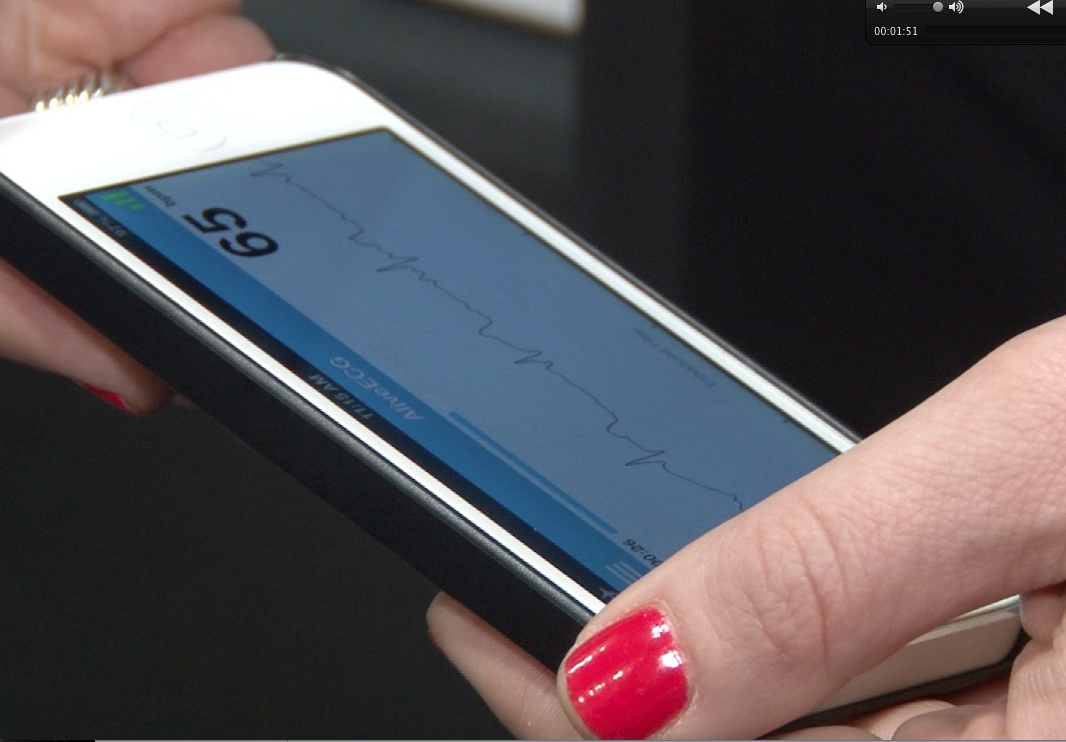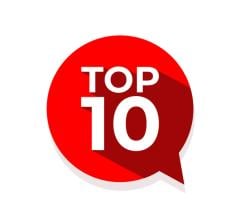
Physicians are starting to "prescribe" smartphone apps to patients for education, tracking their health or to interface with wearable monitor devices. This physician is using an app created by the American College of Cardiology (ACC) to educate a patient about cardiac function.
Today, in a world of immediate access to information anywhere on the planet using a smartphone, consumers expect more from healthcare, which many experts say will cause a major consumer-driven transformation in care delivery models. Technology has evolved to enable what many are calling the “Uberization” of healthcare, where patients will have instant access to healthcare, similar to the Uber app allowing instant access and online tracking for taxi services.
Today, the standard of care for many patients interfacing with their doctors when they have a health issue is to call their primary care doctor’s office. They are often put on hold or are required to leave a voice message and then wait for an unspecified time period for someone to return their call. Often they need to schedule an appointment several days or weeks in the future to access the healthcare system.
Mobile devices, wearables and other new technologies now provide a new mechanism for lifestyle management and transfer of healthcare data between caregivers and the patient, said Peter J. Fitzgerald , M.D., Ph.D., professor of cardiovascular medicine and director of the Center for Cardiovascular Technology and Innovation and Core Cardiovascular Analysis Laboratory at Stanford University. He spoke about the Uberization of healthcare during a future technology session at the 2015 American College of Cardiology (ACC) meeting. He said this new model will soon enable doctors to visit patients, rather than patients tracking down physicians and meeting physician or office schedules.
“Healthcare will follow the retail model — that will be the future,” Fitzgerald said. Today’s consumers are much less patient because they expect instantaneous responses, and he said that is what will drive healthcare with the 30-somethings and younger generations.
He pointed out that the current model for healthcare is based on how things have been done for the last 40-50 years. Fitzgerald said this old model fails to take into account modern technologies to boost efficiencies that have been adopted by consumers and most other industries.
“You swallow the inefficiencies and you just accept it,” Fitzgerald told his peers. “But, with these new technologies there is a vast improvement in efficiencies. You just need a 16-year-old to show you how to use it.”
Already addressing this need for faster, more convenient access to primary care, Walgreens, Walmart, CVS and other big retailers with pharmacy/healthcare divisions have started to install healthcare kiosks and minute clinics. There are now more than 250,000 healthcare apps on iOS and Android platforms. He also noted that a quarter of recent sales growth in personal devices were for wearable health trackers.
Read the article, "How Smartphones and Apps May Change the Face of Healthcare."
Enabling ECGs on Your Smartphone
One of the consumer-physician device interface success stories in this is wave of new health technology has been the Alive or smartphone enabled single-lead ECG system. It uses a finger pad attached to the back of the phone to record a 30-second rhythm strip that can be stored in patients' account in the cloud and sent to a 24/7 analysis center for immediate interpretation by a doctor, or it can be sent to the patient’s doctor in an e-mail. Physicians, pharmacists and nurses are using the device as a triage tool in offices and point of care (POC) settings.
New patient portals allow patients immediate access to their health records, including labs,reports and imaging. This is a requirement under Stage 3 Meaningful Use to enable patients to be more involved in their care and to easily share their information with various physicians.
“We have sold thousands of these devices to U.S. cardiologists and tens of thousands to patients,” said AliveCor founder Chief Medical Officer Dave Albert, M.D. “We are surfing the greatest technology wave in history, which is the advent of the smartphone.”
The company sold out of devices on the show floor at ACC in past years, and had a crowd of physicians around it for most of the expo hours, a testament to the high level of interest by cardiologists.
Albert said there are now 2 billion smartphones in the world, of which about 700 million are iPhones. He said this will enable the concept of mobile healthcare. “It is a direct connection with patients,” he said, explaining the technology allows for levels of patient engagement never before possible.
“There will be an Uberfication of healthcare using mobile technology. There are very few cures for cardiovascular diseases, but this technology can make these diseases much easier to manage,” Albert said.
Enabling Remote Monitoring and Patient Engagement
"By leveraging new technologies, remote monitoring of patients with chronic conditions can be streamlined and made much more cost-effective,” said Kenneth Kleinberg, FHIMSS, managing director of research and insights, The Advisory Board Company. He spoke on remote monitoring technologies at the 2015 Healthcare Information and Management Systems Society (HIMSS) meeting. This care model will include telehealth virtual patient visits and nurse triage using smartphone or other Web-based video connections, two-way access to patient information via patient portals and use of social networking sites. Wearable devices on the market include attached sensors like FitBits or devices that link into a smartphone, smartclothing and smartwatches. The next generation of health monitoring devices will include sophisticated, disposable adhesive, flexible electronic devices that adhere directly to the skin to monitor a variety of parameters, or replace external testing devices.
Hundreds of companies are now developing or already marketing inexpensive sensor technologies or apps for health monitoring. Kleinberg said it will also become increasingly common for physicians to “prescribe” apps for wellness compliance, patient monitoring and patient education.
The old care model of top-down technology had providers and insurance companies paying for devices to monitor chronic health conditions. The new model might rely on a bottom-up model, where patients purchase their own devices and monitor their conditions and link the data capture to their physicians.
“We are already starting to see both of these approaches starting to collide,” Kleinberg said.
“Hospitals should be for emergencies, not urgencies,” Fitzgerald said. Remote health monitoring technology now enables this to take place with a high level of patient involvement.
Heart failure is the biggest area of potential impact for these technology changes. Fitzgerald said apps, wearables and new miniaturized implantable monitors have the ability to remotely monitor patients and identify worsening conditions prior to the patient being aware of an issue, allowing simple interventions to avoid an acute episode.
“It is like a credit card fraud problem, where software monitors heart failure patients remotely,” Fitzgerald said.
The Internet of Things and Gamifing Healthcare
A new trendy buzz term is the “Internet of things,” which refers to the proliferation of Web-based devices and software that use the Internet independently of their human masters. These technologies have included smart home controls for alarm systems and HVAC controls, and automobile systems that automatically report issues with a vehicle or monitor and track their location. Healthcare is now entering this network with remote monitoring devices and health tracking devices, Kleinberg said.
Among the most common of these are FitBit and similar personal health trackers, which integrate with smartphones via a Bluetooth interface and connect with cloud-based accounts for each user. Data from these accounts can be shared with other users so groups of friends can compete with each other to see who can walk the most steps or flights of stairs in a day. Friends can also issue challenges for specific goals to individuals or groups that share their data. This type of competition helps make healthy lifestyles more like a game between friends than a workout regimen, and has found wide appeal in the consumer market. Kleinberg said many in the healthcare technology sector say this gamification of healthcare may help promote healthier lifestyles in a way never before possible with physician consultations.
Patients tend to feel they live a healthier lifestyle than they really do, and these types of tracking devices and supporting apps have the ability to show the reality of a patient’s activity and make them more adherent.
No Excuse for Health Data Fragmentation
Jeroen Tas, CEO of healthcare informatics solutions and services for Philips Healthcare, said he was shocked at how fragmented healthcare is when he became involved in healthcare IT a few years ago. He said healthcare has a lot to learn from other industries that already adopted cutting edge technology to boost productivity. He said he can use his ATM bank card at a machine in India to get cash from his personal bank account back home half-way around the world. He said his bank’s computer system is able to securely share his financial information with any institution in the world instantaneously, yet his own doctor cannot see what his patient record says across the same hospital, or is unable to see what prescriptions he was given by another doctor in the same health system.
“The only way to fix this is to truly integrate data from disparate sources,” he said, speaking in a future technology session at ACC 2015. “We need to leverage consumer technologies, they will help us get a long way.”
Many say the future of healthcare should be focused on prevention of disease, not reactionary medicine to treat acute disease. Technology can do a lot of the heavy lifting in the area of prevention and serve as an early warning system for disease, but the technology needs to evolve to include mining of discrete data to identify risk factors.
“To do this we cannot just concentrate on recording information on acute care episodes. We need to organize around the continuum of care and include prevention,” Tas explained. This includes integrating data on patient lifestyles that was never before possible until the current revolution of consumer-grade biomonitoring sensors flooding the market. He explained these devices can be leveraged to show if patients are truly living health lifestyles, aid prevention efforts, aid diagnosis, treatment and recovery, and enable home care.
Tas said data from these devices already is helping patients identify health problems earlier. Data mining of patient records may offer additional identification of specific patient populations hospitals can target for regular follow-ups if they are considered high-risk for heart failure, coronary disease and other conditions. Tas said genetic testing offers another avenue for risk assessments to identify at-risk patients years before they present with symptoms. Currently, he said this data is not leveraged.
Sequencing the human genome took nine months and $100 million 10 years ago, but today it can be done in 24 hours for about $1,000, he said.
“Other industries would die for this type of data, knowing who will be customers for life, such as patients who are diagnosed with heart failure,” Tas said.
He believes POC testing will become increasingly important in the coming years as a way to reduce healthcare costs and meet the patient demand for immediate care. These technologies will include lab on a chip testing systems. Tas also envisions an increasing use of smartphones as a platform for healthcare triage, including as an app-based ultrasound system or basic clinical testing system for ECG, pulse oximetry and blood pressure monitoring.
Remote monitoring of patients using these types of new technology will also help reduce healthcare costs. “After a hospital visit, if you monitor people 24/7, you can reduce readmissions by 60-70 percent,” Tas said. This type of home monitoring also may reduce the average number of days in the hospital for heart failure patients and significantly cut the costs for their care.
“This is the opposite of acute care — this is avoiding acute care,” he said. “We see tremendous opportunities in aggregating and analyzing patient data to improve care and avoid the need for acute care. If we do this, I don’t think we can just improve healthcare, but we can exponentially improve healthcare,”
“What is happening is exponential growth in speed, capacity and technology adoption,” Tas said. The 2 billion people today who have smartphones will double to about 4 billion by 2020. Today, there are about 16 billion devices connected to the Internet. He also noted that change might come quickly. “It only took Facebook seven years to reach 1 billion users,” he said.
Read the article, "Understanding How Big Data Will Change Healthcare."
Other articles on future technologies in cardiology and healthcare:
Cardiovascular Advances to Watch in the Next Decade
The Future of 3-D Printing in Medicine
VIDEO: Editor's Choice of Future Healthcare Technologies at HIMSS 2015






 April 09, 2024
April 09, 2024 








